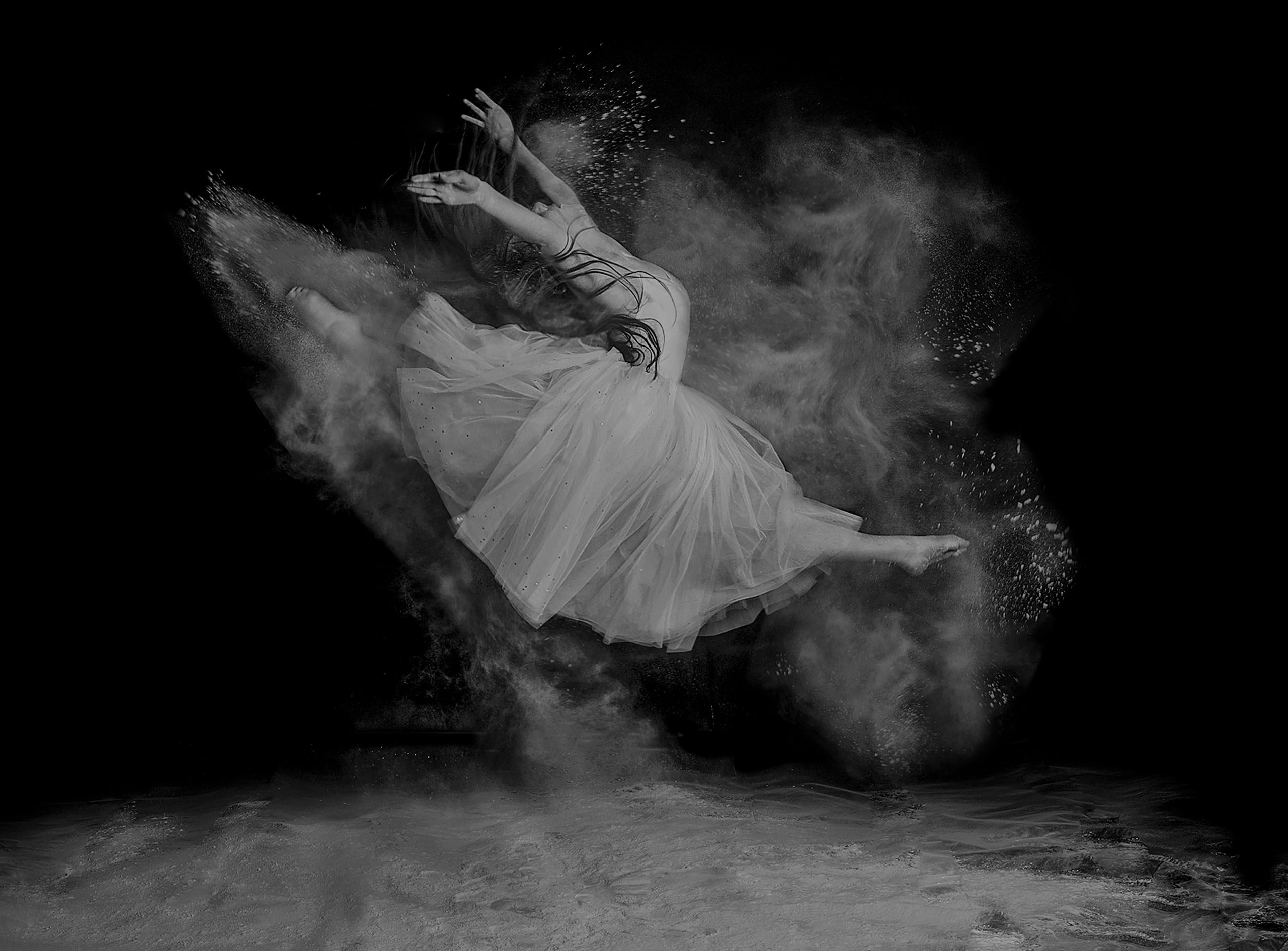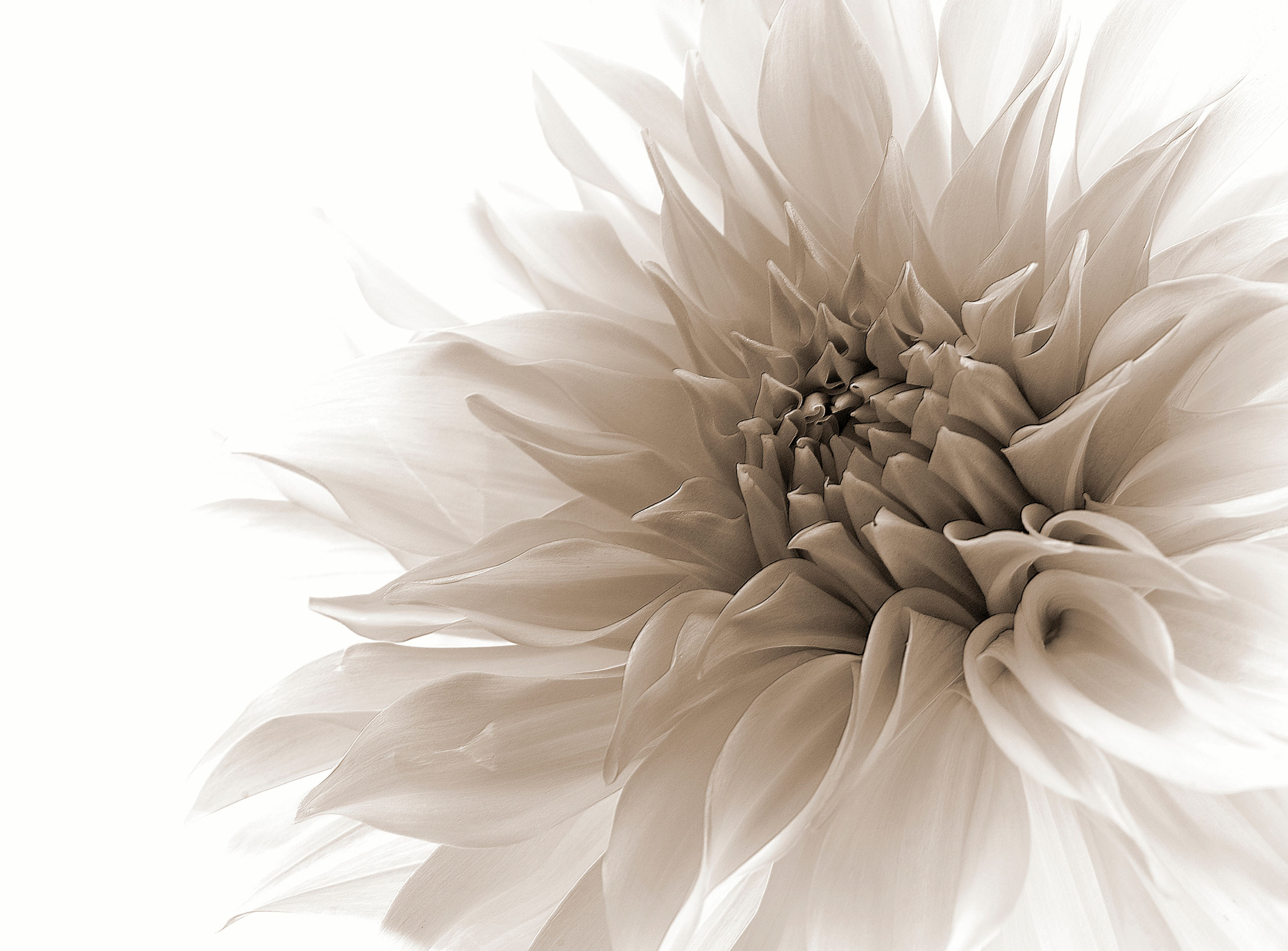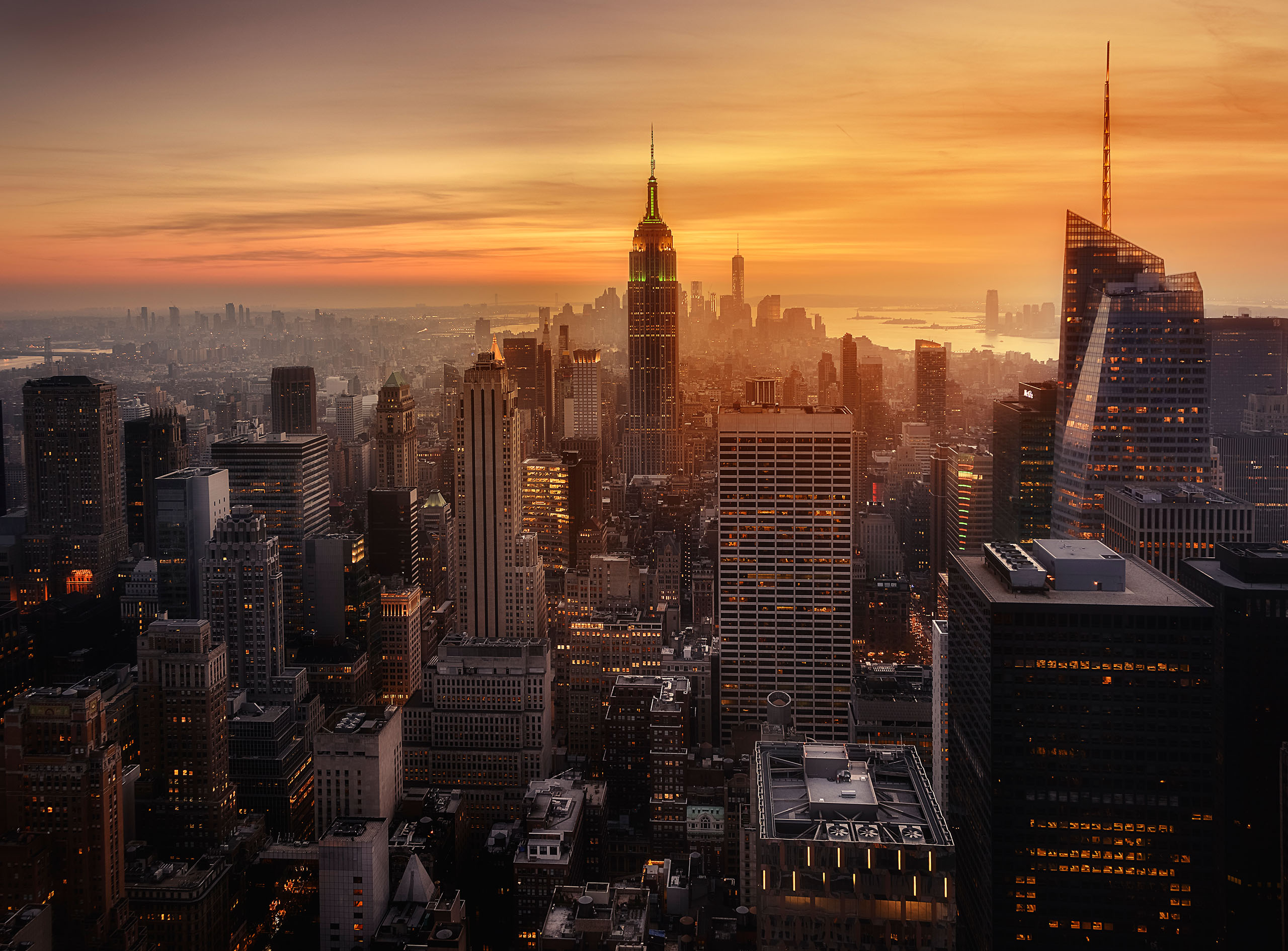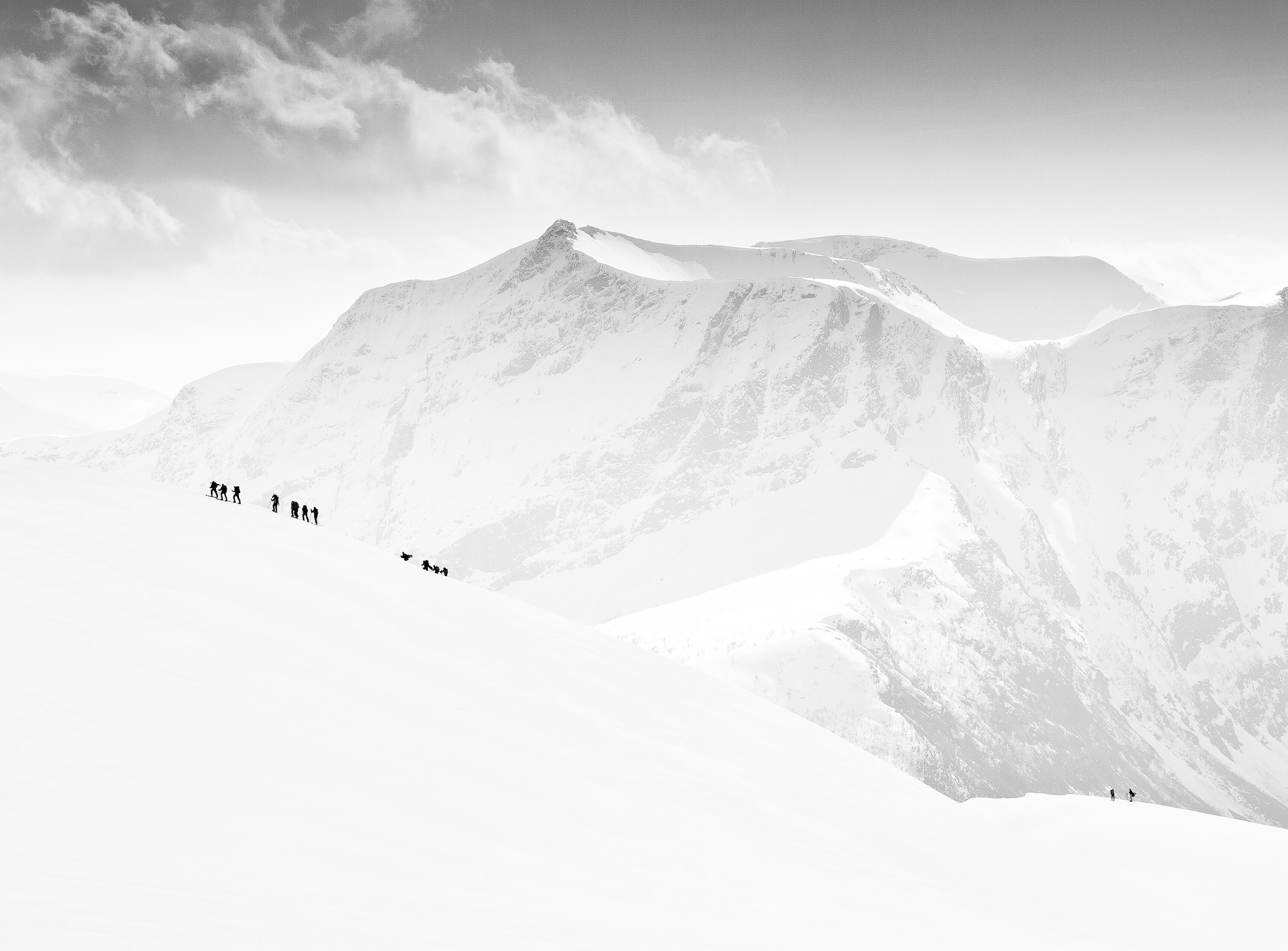SEARCH






|
|
|
|


by Yvette Depaepe
Published the 31st of March 2025
To Yongnan Li photography has always been a hobby and it has gradually become a way of life. He leads other photography enthusiasts to beautiful places around the world to take pictures and he makes a living out of it. Yongnan quotes : “Photography is always a process of capturing moments, and landscape photography is no exception. Each of our landscape photographers strives to capture the perfect image that we envision. I explore places I've never been before, such as newly formed blue ice caves under glaciers.”
Let's travel with him through his landcapes and learn more about the artist behind the images.
'Winter Bow Lake'
Dear Li, first of all I would like to thank you for taking the time to answer this questionnaire! First of all, please introduce yourself and tell us more about yourself, your hobbies or other projects you are involved in!
Thanks to 1x.com. This interview is a great honour for me. Personally, I work in tourism and photography in the Banff National Park area of Canada and run my own travel company. I am a father of three and much of my free time is taken up by my children. In terms of hobbies, landscape photography is now my main passion, including post-processing and creating content for social media. I also enjoy outdoor activities such as hiking and skiing.
'Mt Smutwood at Fall'
When and how did your photographic journey begin?
I started learning photography in 2015. At that time, I only had two sons and I wanted to capture some precious memories for them. I met a photographer from China at a meeting. He took some photos of my children and when he sent them to me later, I suddenly realised - wow, photos can speak! He captured the warmth and interaction between the two boys, which made me very interested in photography. After my daughter was born, I was able to take some wonderful childhood photos for her. Through my work in the tourism industry, I often visited the beautiful Banff National Park in the Rocky Mountains. I gradually began to explore landscape photography, developed a strong interest in it and became deeply involved.
'First Snow Emerald Lake
For many of us, photography is either a hobby or a way of life. How would you define your relationship to photography?
Photography has always been my hobby and it has gradually become a way of life. I lead other photography enthusiasts to beautiful places around the world to take pictures and I make a living out of it. I feel like I currently have three different jobs: 1. Photographer - capturing and creating exceptional landscape photography 2. Businessman - running my tourism company and 3. Father - guiding and educating my children. As a landscape photographer, I need to be outdoors, venturing into these magnificent natural landscapes to capture breathtaking scenery and witness extraordinary views that most people never get to see. On the other hand, as a father, I hope to have enough time to spend with my children and see them grow. I am constantly looking for a balance between work and family and feel very fulfilled in my life.
And of course photography is a hobby for me, because when I'm feeling down, need to push myself to think, or even face a creative block in photography, I take my camera with a long lens and shoot small scenes around my home or in nearby parks. Discovering the beauty in people and things close to me is also one of the joys of photography. This simple way of shooting makes me very happy and it's something I often recommend to beginners to practice and explore.
'The Tree and Mountain'
What would you say is the most important experience that has influenced your steps in photography?
The COVID-19 pandemic in 2020 caused me to lose all my work and my business came to a standstill. In the same year, I began to seriously and systematically study photo editing and started travelling to some of the world's most beautiful and extreme photographic destinations to create. By 2022, I was no longer satisfied with just shooting in the Canadian Rockies. In February of that year, I had my first opportunity to join a photography group to Iceland, where I captured and discovered many stunning landscapes, including Iceland's blue ice caves and the snow-capped Vestrahorn mountain. It was then that I realised how many extraordinary landscapes there are in the world. From then on, I gradually began to travel the world for creative work and to lead photography tours, including two trips a year to Iceland, winter trips to Norway's Lofoten Islands, autumn and spring trips to Italy's Dolomites, and April trips to the breathtaking autumn landscapes of Patagonia in South America.
'Lupinus and Vik Church'
You have your very own style. Why are you so drawn by landscape photography?
There is an ancient Chinese saying: "The benevolent find joy in mountains, and the wise find joy in water." I grew up in the mountains, so I have a deep affection for mountains and rivers. The creation of landscape photography is an interactive expression of the various elements of nature. In ancient Chinese paintings, mountains and rivers were always depicted on a grand scale, while the people and villages in the scenes appeared extremely small, showing that the ancients held a deep reverence for nature. Frost, rain, snow, auroras, and lightning are all forms of nature's dialogue with humanity, its language. To capture great landscape photos, one must accurately interpret and thoroughly understand the messages nature conveys to us, while respecting all natural laws in the process of shooting.
'Storm of Lightning'
What is more important to you, the mood/story behind your images or technical perfection?
For me, the mood and story behind the photograph is more important. All the technical aspects of photography are there to express the mood and narrative of the image. A photograph is a record of a moment, capturing a crucial and remarkable moment. What matters most is the feeling the image evokes in the viewer. Of course, when it comes to landscape photography and post-processing, the quality of modern cameras has reached a point where there's no significant difference between settings such as F8-F13 and ISO 320-1000.
'Northern Light of Wadge Pond'
'The Light of Forest'
What is your relationship to your subjects in general, beyond that of an observer?
Do you carefully prepare the places you want to photograph?
In landscape photography, the main elements to capture are mountains, water, plants and so on. Water comes in various forms: ice, frost, rain, snow, glaciers, rivers, oceans, lakes and so on. There is a famous saying in Chinese culture: "Water benefits all things, but does not compete," meaning that water nourishes all living things in nature without seeking to assert its uniqueness. This embodies a spirit of humility and inclusiveness. Mountains, on the other hand, have many characteristics, such as the solitude of being high and cold, the expansiveness of their vastness, and the resilience of their sharp edges. Plants and trees represent the vitality of summer and the warm colours of autumn. I strive to capture these unique qualities of the natural elements with my camera - the softness of water, the grandeur of mountains, the brilliance of autumn and the harshness of winter. These are the emotions I express in my images and the dialogue I have with nature.
When I go to a location, I carefully plan the trip: I study the positions of the shooting spots and mountains, the areas where the sunrise and sunset light will fall, and even the distance from the accommodation to the shooting spots. This is all part of the meticulous planning process. Sometimes, no matter how meticulously I prepare, I still cannot complete the planned shoot due to uncontrollable factors such as the weather. I believe that everything is arranged for the best. The unexpected changes can take the trip by surprise, as long as the photographer can make a quick decision. For example, capturing a stunning moment on the way to the location when a storm suddenly hits.
'Saint Area'
Describe your overall photographic vision.
Photography is always a process of capturing moments, and landscape photography is no exception. Each of our landscape photographers strives to capture the perfect image that we envision. To achieve this, I explore places I've never been before, such as newly formed blue ice caves under glaciers. Sometimes I return to the same scene again and again, waiting for those awe-inspiring moments - whether it's lightning, the aurora borealis, a stunning cloud formation or even the sudden appearance of an animal. These elements can give the same scene a completely different feel. Recently, many experts have commented on the homogenisation of photography, arguing against shooting in the same locations. I don't entirely agree with this view because every interaction I have with nature is unique. When that once-in-a-lifetime moment happens, I want to be the one to personally experience and capture it, rather than relying on post-processing or AI to recreate it. After all, the most beautiful moments in landscape photography come from first-hand experience - something that can't be achieved by sitting behind a keyboard.
'The Secret of Blue Cave'
In your opinion, what are the main characteristics of a successful landscape photographer?
As a professional landscape photographer, I believe one must have a thorough understanding of natural elements such as wind, frost, rain and snow, as well as the ability to predict weather conditions using various forecasting tools. Only then can they have a clear idea of the scenes they can capture. As the saying goes, a photographer must "read the language of nature". All natural phenomena - wind, frost, rain, snow and weather changes - are essentially nature's way of communicating with man. A landscape photographer must understand and interpret these changes in order to make his shooting plans relatively successful or to have a reasonably accurate prediction in advance. For example, in winter in Banff National Park, you need to know what scenes to expect at certain locations when temperatures drop below -20°C, such as ice formations, snowdrifts, frost-covered trees and other extreme landscapes caused by the severe cold.
When photographing the aurora, we must first predict its arrival time and intensity, check the clarity of the sky, the thickness of the clouds and other factors to increase the chances of a successful shot, while also taking into account the foreground. Another crucial point is that a landscape photographer must have sufficient physical stamina to cope with activities such as hiking and mountaineering. After all, we want to capture scenes that others haven't seen, to show the world the lesser-known aspects of nature.
'The Winter Morning'
Could you please tell us a bit more about your workflow from idea to final product?
Many years ago I enjoyed collecting art. In today's society, there are many fake works of art, and without sufficient knowledge to identify them, my approach was to frequently view and appreciate genuine, high quality art to enhance my artistic sensibility and ability to discern authenticity. The same goes for photographic art. I often visit top photography websites, especially 1x.com, to enjoy and learn from works of great artistic value, thereby improving my understanding of art and inspiration. Therefore, having a vision in mind is the most important thing, followed by taking action and visiting beautiful places at the right seasons to create. Of course, many of the scenes I capture may not seem particularly valuable at the time, but when I revisit the raw file at my leisure and scrutinise it, I often find more inspiration for post-processing. Modern landscape photography is inextricably linked to post-processing, so having solid post-processing skills is also crucial to producing a great landscape photograph.
'The Morning of Wadge Pond'
Where do you find inspiration and what inspires you most?
I think all inspiration comes from the imagination, much like writing. The depth of your experience is often more important than advanced writing skills. You need enough imagination in your mind to create a complete piece of writing. It is the same with photography. Having that beautiful image in your head is more important because it drives you to find where it comes from and capture it. On Instagram, I follow a lot of photographers with different styles, and I often browse the work on the homepage of 1x, almost every day. Whether it's documentary, landscape or portrait photography, these works give me a lot of inspiration. It is often easier to learn and be inspired by the experiences of others than to rack one's brains. For example, incorporating human elements into nature or blending portraits with natural landscapes can add a striking touch to the image. In this way, photography is also a reflection of personal experience. The more you have in your mind, the more naturally it translates into the reality captured in your photographs. Nature offers many different weather conditions, and even the same location can produce very different results when photographed at different times, seasons or temperatures. That's why I revisit places I'm very familiar with, such as Banff, in different seasons and often find new inspiration and perspectives to explore.
'Adventurer in Blue Cave'
'Cloudy Mountain'
Many people think that the equipment is not very important when the passion for photography is strong. But could you please tell us what equipment you use (camera, lenses, lighting, tripod, etc.)?
I mainly use the SONY A7 series camera and a wide angle lens most of the time. The wide angle lens allows me to include more elements in the frame and its distortion effect can make the foreground even more captivating. I also use Kase filters to help me with my shots. Meanwhile, when shooting in Europe, I often fly my DJI Mavic 3 Pro, which gives me a bird's eye view to capture these spectacular scenes. For landscape photography, using a variety of perspectives to capture these breathtaking landscapes is really the best approach.
'Cloud of Mountain'
What is your favourite photo? Please tell us the story behind it.
This is a photo I took last year of Fitz Roy Peak in the Patagonia region of South America. I visited this beautiful place for the first time in April 2024. We spent two nights at a campsite at the foot of the mountain and hiked two and a half hours under the stars to get there. Unlike many photographers who descended to the lakeshore to shoot, I wanted to find the best position to centre the peak in the frame and capture as much of the mountain's reflection as possible. After a long search in the dark, I finally climbed onto a large boulder and captured this image of Fitz Roy Peak during the blue hour, when the mountain was softly glowing. Photographers often say that Patagonia has two golden sunrises - the first being this stunning blue-hour glow on the peaks.
'Blue Time of Fitz Roy'
Who are your favourite photographers or mentors whose work has influenced you and your photography?
As I mentioned earlier, when I first started using a camera in 2015, a photographer took a few pictures of my children that left a lasting impression on me. Since then, I have been following his online photography courses for several years. He often offered free photography lessons for beginners in some groups in his spare time, from which I benefited a lot. Since last year, I have also started a public photography group where I offer a series of free photography courses for beginners, hoping to pass on this spirit of public service. At the end of 2019, I started to buy post-processing courses, such as those by Weimin Chu (Thomas Chu on 1x), who won the 2019 National Geographic Global Photographer of the Year award and was honoured in the World Press Photo competition. Of course, I also follow other outstanding landscape photographers such as Daniel Kordan (kordan), Marc Adamus (marcadamus) and our local Banff photographer Paul Zizka. Every year I keep a close eye on the winners of the major landscape photography competitions. The styles and locations of these photographers have had a significant positive influence on my work, inspiring my photography with fresh ideas.
'Diamond Beach'
Now that we have almost reached the end of this interview, I would like to ask you to tell us about your plans or photographic projects that you would like to be involved in.
Since landscape photography is my life, my plans are always to explore and shoot in places around the world that I haven't visited yet, such as New Zealand, Japan, Greenland, Antarctica and more. The earth is vast and there are still many places where I want to use my camera to capture the beautiful scenes I imagine in my mind. These places may have been visited many times in my imagination and I may have my own ideas of what beauty looks like, but I still want to experience and photograph them for myself. I also want to take my groups and photography enthusiasts with me to capture and document the beauty of this world together.
'The Winter of Torre'
Is there anything else you would like to add and what do you think of 1X as a home base for your work?
1X is an excellent platform for me to find inspiration, learn and evaluate my own work. The judges and members here provide valuable feedback and suggestions on how to improve my photography, which is fantastic. In 2020, I published less than 10 photos in a year. However, as I continued to learn and improve my shooting and post-processing skills, I managed to publish over 200 photos in 2024, including 103 winning photos. This was an unimaginable achievement just a few years ago, and it fills me with great pride. I now feel confident to share my new photos here every time. I am truly grateful for all that 1x has brought to my journey.
'Lofoten at night'
'Sunrise of Ice Lake'
'Lofoten Beach'
'Mt. Assiniboine Dawn'
'Castle Mountain Aurora'
'Ice Crack'
 | Write |
 | Claudiu Iacobescu PRO Beautiful picture |
 | Yun Thwaits PRO Beautiful images and great interviews! Congrats! |
 | Gian Corrado DONATI PRO Excellent article and so beautiful landscape photography ! Congratulations !!! |
 | Hanping Xiao PRO Beautiful images. Congratulations! |
 | garyholman PRO Wonderful! images and a very interesting interview, Congratulations! |
 | Allen SDCA PRO Congrats for your achievements! 祝贺你的成就! |
 | Yanny Liu PRO Magnificent landscape collection, Congrats! |
 | John Fan CREW Congratulations! |
 | Miro Susta CREW Dear Yongnan, I'm already longer time following your wonderful photo work, I love your landscape photos, now thanks the interview arranged by Yvette I know more about you and your photo work. Wish you many excellent photos in the future and many thanks to Yvette for managing and publishing this interview. |
 | Tony Xu PRO Sincere Congratulations |
 | Pang Teng Lin PRO Spectacular work |
 | Yongnan Li (李永男) PRO Thanks Lin. |
 | Subhajit Das PRO Absolutely beautiful work. Congratulations! |
 | Yongnan Li (李永男) PRO Thanks Subhajit. |
 | Eiji Yamamoto PRO Thank you so much for this wonderful and inspiring interview with very beautiful and amazing photographs! |
 | Yongnan Li (李永男) PRO Thanks Eiji. |
 | Robert Žumer PRO Beautiful collections |
 | Yongnan Li (李永男) PRO Thanks Robert. |
 | Eduardo Blanco García PRO Excelentes imágenes. |
 | Yongnan Li (李永男) PRO Thanks, Eduardo. |
 | Zhifei Chen PRO 美丽的风景 |
 | Yongnan Li (李永男) PRO 谢谢。 |
 | Frank W. PRO Wonderful works! Congrats! |
 | Yongnan Li (李永男) PRO Thanks Frank. |
 | Peter Hammer PRO Great images.
|
 | Yongnan Li (李永男) PRO Thanks Peter. |
 | Roberto Miniero PRO Impressive collection of beauty |
 | Yongnan Li (李永男) PRO Thanks Roberto. |
 | Mei Xu PRO Beautiful Landscapes. Congratulations! |
 | Yongnan Li (李永男) PRO Thanks Mei... |
 | Wanghan Li PRO So beautiful and fantastic works! Best compliments! |
 | Yongnan Li (李永男) PRO Thanks, Wanghan. |
 | Dennis Zhang PRO Beautiful collection, Congratulation! |
 | Yongnan Li (李永男) PRO Thanks, Dennis. |
 | Parole Kim PRO Fantastic work |
 | Yongnan Li (李永男) PRO Thanks Parole. |
 | Art Arduvan Superb!! |
 | Yongnan Li (李永男) PRO Thanks. |
 | Fan Lin (APA) PRO Beautiful collections and excellent interview! Congratulation Yongnan! |
 | Yongnan Li (李永男) PRO Thanks Fan. |
 | Molly Fu APA PRO Beautiful collections, congrats! Thanks dear Yvette for another excellent interview! |
 | Yongnan Li (李永男) PRO Thanks, Molly. |
 | Kathy(Jie Xiao) PRO Congratulations 🎉🍾🎈 |
 | Yongnan Li (李永男) PRO Thanks, my friend... |
 | Ruiqing P. PRO Stunning images and excellent interview, congratulations Yongnan! |
 | Yongnan Li (李永男) PRO Thanks Ruiqing... |
 | Aidong Ning PRO Great collection of work and excellent interview, Congratulations Yongnan! Thank you dear Yvette for another great interview! |
 | Yongnan Li (李永男) PRO Thanks, Aidong, you always my teacher for photography.. |
 | Massimo Strumia PRO Beatiful images and inspiring interview, congrats! |
 | Yongnan Li (李永男) PRO Thanks, Massimo. |